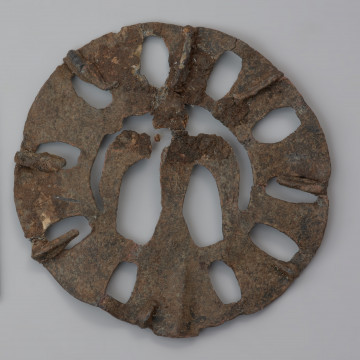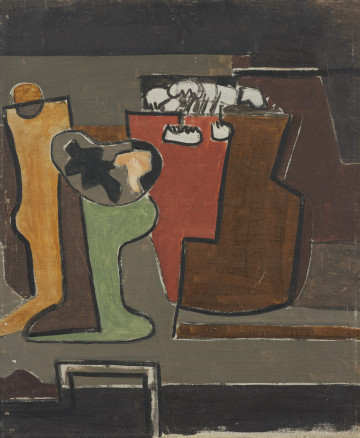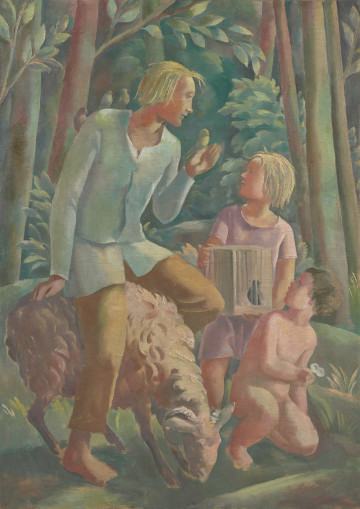
Openwork badge with bird
1200 — 1225
National Museum in Szczecin
Part of the collection: European classics of modernity
Artur Nacht-Samborski studied painting from 1918 to 1921 at the Kraków Academy of Fine Arts under Józef Mehoffer and Wojciech Weiss. He interrupted his studies to go to Berlin and Vienna. There he became acquainted with German Expressionism, which became one of his inspirations. He paid attention to the work of Archipenko, Chagall, Kandinsky and Klee. In 1924, he returned to the Kraków Academy, initially in the studio of Felicjan Szczęsny Kowarski and later in the studio of Józef Pankiewicz. He belonged to the group of Kapists (members of the Paris Committee), with whom he left for France the same year. Since then, mainly in Paris (in La Ciotat, among other places), he developed his knowledge and artistic workshop until 1939. He spent the initial period of the war in Lviv, where he ended up in the ghetto. Rescued by friends, he hid near Warsaw under the assumed name Stefan Samborski. In 1956, he officially changed his name to Stefan Artur Nacht-Samborski. After the war, he accepted the position of a professor at the State Higher School of Fine Arts in Gdańsk (1947-1949) and later at the Academy of Fine Arts in Warsaw (1949-1969, with a break in 1950-1952 when he was removed from his job during the domination of socialist realism. The painter's work is most strongly influenced by two tendencies stemming from his experience - German Expressionism, on the one hand, and the assumptions of the Kapists, on the other. In the collection of the National Museum in Szczecin, there is the painting Wnętrze [The Interior] from 1960. A characteristic feature of Nacht-Samborski's work was the constant return to the same themes, which allows us to see how his struggle with the matter of painting developed. He would return to certain representations, for example, after taking a lesson in abstraction. Constant returns are also information about the painter's assumption that there are no final solutions in art. One of such themes was still life. The Szczecin still life comes from a very favourable year for the artist. A stable situation at the university allowed him to work intensively, and he was invited to numerous exhibitions, which strengthened the artist's conviction about the value of his art.
Beata Małgorzata Wolska
Author / creator
Dimensions
cały obiekt: height: 100 cm, width: 72 cm
Object type
painting
Creation time / dating
Creation / finding place
Identification number
Location / status

1200 — 1225
National Museum in Szczecin

1936
National Museum in Szczecin

między 1920 — 1939
National Museum in Szczecin
DISCOVER this TOPIC
National Museum in Szczecin
DISCOVER this PATH
Educational path